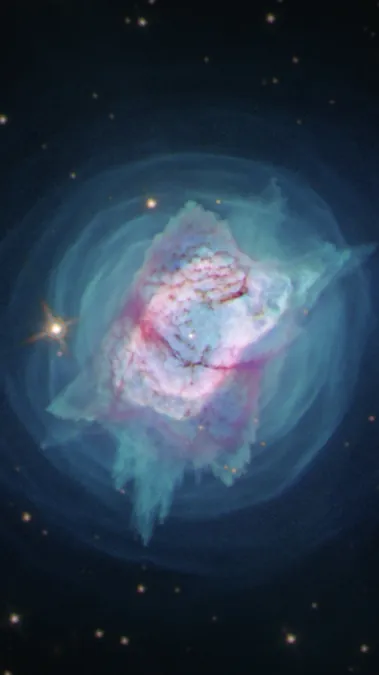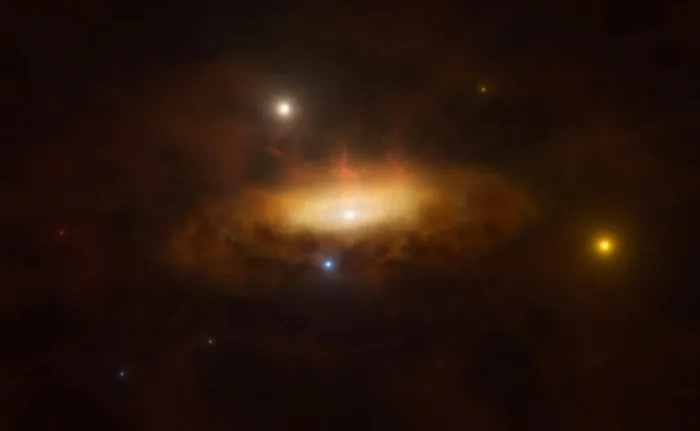
NASA's Hubble Telescope Reveals Breathtaking Insights Into Star Formation in NGC 4941
2025-04-07
Author: Arjun
NASA’s Hubble Space Telescope has once again dazzled the world with its latest discovery—a breathtaking glimpse into NGC 4941, a spiral galaxy situated about 67 million light-years away in the constellation of Virgo. With its advanced imaging technology, Hubble has unveiled intricate details that offer astronomers crucial insights into the complex dynamics of star formation and the broader mechanics of galaxy evolution.
The Splendor of NGC 4941
The high-resolution images released by the NASA Hubble Mission Team reveal stunning features of NGC 4941, including clusters of young stars and delicate streams of gas and dust, all swirling in a magnificent cosmic dance. This nearby galaxy serves as an ideal laboratory for scientists eager to explore the processes that govern star formation. The observations made on April 4, 2025, are pivotal in our understanding of how galaxies like NGC 4941 develop and evolve over billions of years.
Stellar Feedback: A Cosmic Interaction
Central to this investigation is the concept of stellar feedback, which describes how newly formed stars interact with their cosmic environment. As these stars emerge from dense, cold gas clouds, they release energy through stellar winds and intense radiation. Massive stars, in particular, end their life cycles in spectacular supernova explosions, further altering their surroundings. The study of NGC 4941 is helping astronomers decode the significance of these interactions, illustrating how they regulate the rate of star formation and shape the trajectory of galactic evolution.
Unraveling the AGN Mystery
Adding another layer of complexity to NGC 4941's dynamics is the presence of an active galactic nucleus (AGN) at its center, powered by a supermassive black hole. This mysterious AGN is actively drawing in gas, forming a superheated accretion disk that radiates energy across the electromagnetic spectrum. As the gas spirals inward, the AGN generates powerful jets and winds that can profoundly impact the galaxy’s broader structure and star formation processes.
The Dual Impact on Galaxies
The intricate feedback mechanisms from both stars and the AGN converge to create a unique environment within NGC 4941. The simultaneous action of stellar feedback and AGN influence provides a rare opportunity for astronomers to study how these forces shape the lifecycles of galaxies. Understanding these dynamics is not just a scientific curiosity; it is essential for piecing together the evolutionary history of galaxies across the universe.
As we continue to unlock the secrets of galaxies like NGC 4941, Hubble’s discoveries promise to deepen our understanding of the cosmos, highlighting the delicate interplays of energy, matter, and gravity that govern the universe. Stay tuned for more intriguing findings as scientists analyze the data gathered from this and other celestial wonders!




 Brasil (PT)
Brasil (PT)
 Canada (EN)
Canada (EN)
 Chile (ES)
Chile (ES)
 Česko (CS)
Česko (CS)
 대한민국 (KO)
대한민국 (KO)
 España (ES)
España (ES)
 France (FR)
France (FR)
 Hong Kong (EN)
Hong Kong (EN)
 Italia (IT)
Italia (IT)
 日本 (JA)
日本 (JA)
 Magyarország (HU)
Magyarország (HU)
 Norge (NO)
Norge (NO)
 Polska (PL)
Polska (PL)
 Schweiz (DE)
Schweiz (DE)
 Singapore (EN)
Singapore (EN)
 Sverige (SV)
Sverige (SV)
 Suomi (FI)
Suomi (FI)
 Türkiye (TR)
Türkiye (TR)
 الإمارات العربية المتحدة (AR)
الإمارات العربية المتحدة (AR)